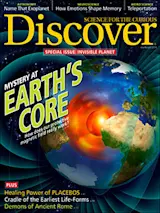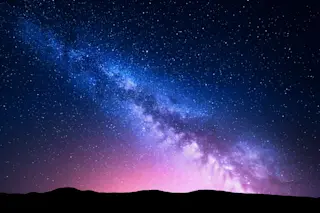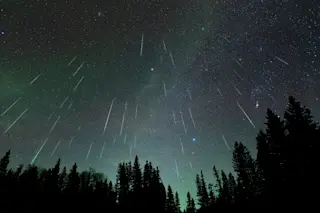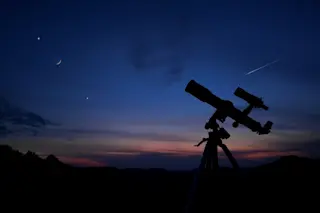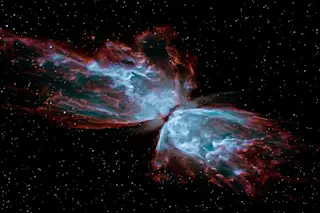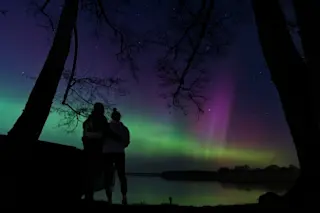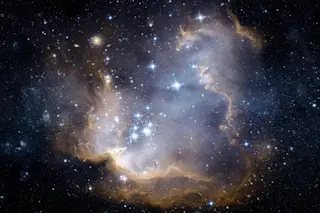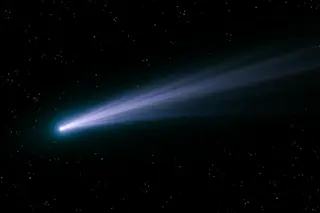About the Map: It depicts the sky from mid-northern latitudes at the following times: 11 p.m. August 1, 10 p.m. August 15, 9 p.m. August 31.
What You Can See: Venus passes close, just 0.2 degrees north of Jupiter in the predawn sky Aug. 18. The sky’s two brightest points of light haven’t appeared this close since May 2000.
Two of the sky’s finest open star clusters lurk in the southern part of Scorpius the Scorpion. Both M6 and M7 appear as fuzzy patches to the naked eye under a dark sky. Yet through binoculars, a dozen or more stars come into view whether you observe from the country or a suburban backyard. The two clusters lie far enough south, however, that only in the summer can northern observers see them well during the evening hours.
M7 is the bigger and brighter of the two, about 5 degrees (10 full-moon ...



